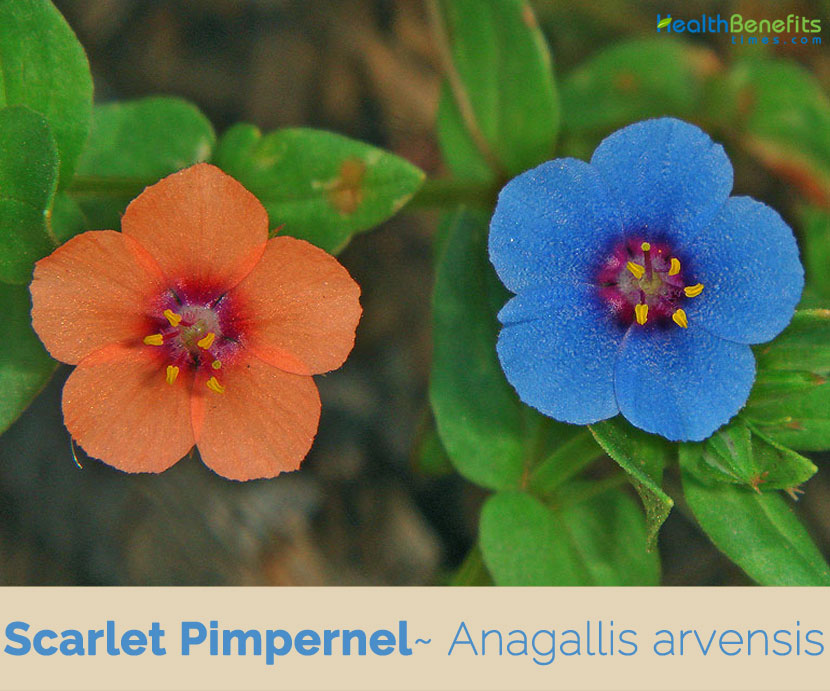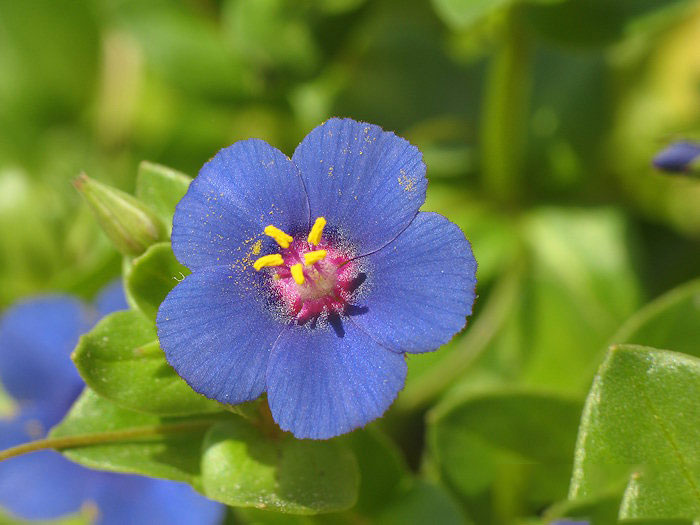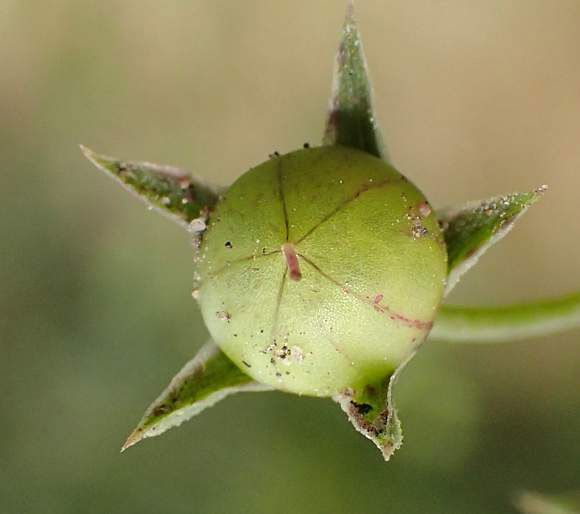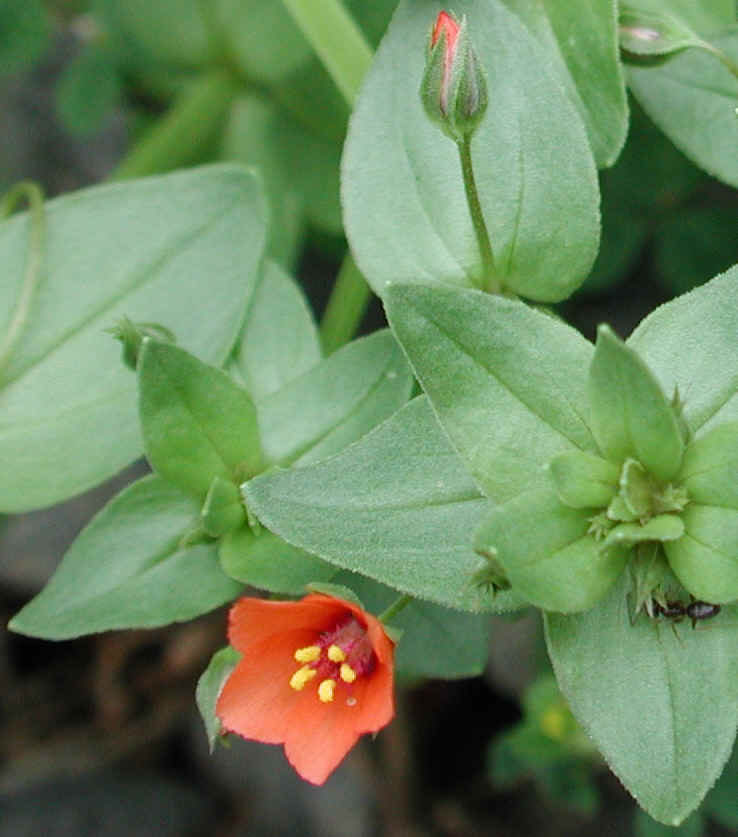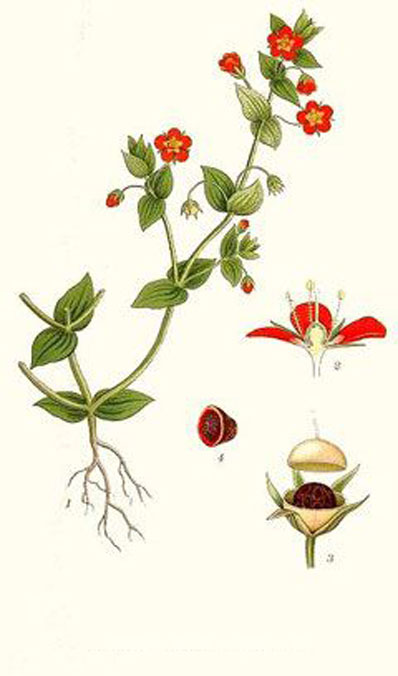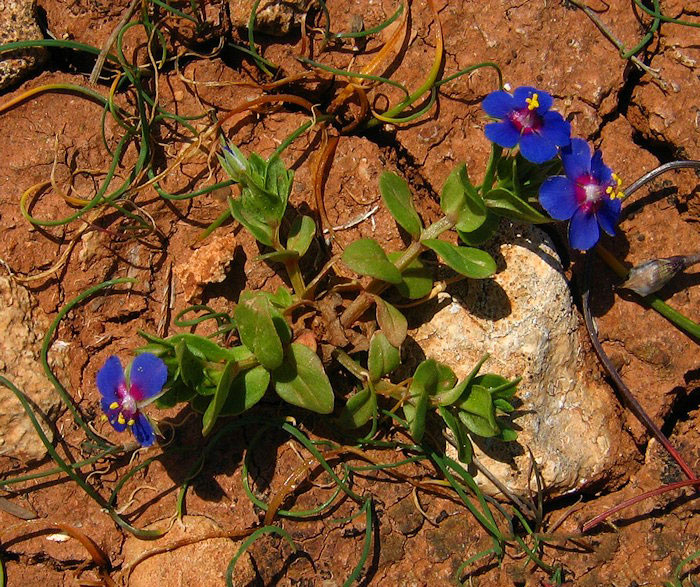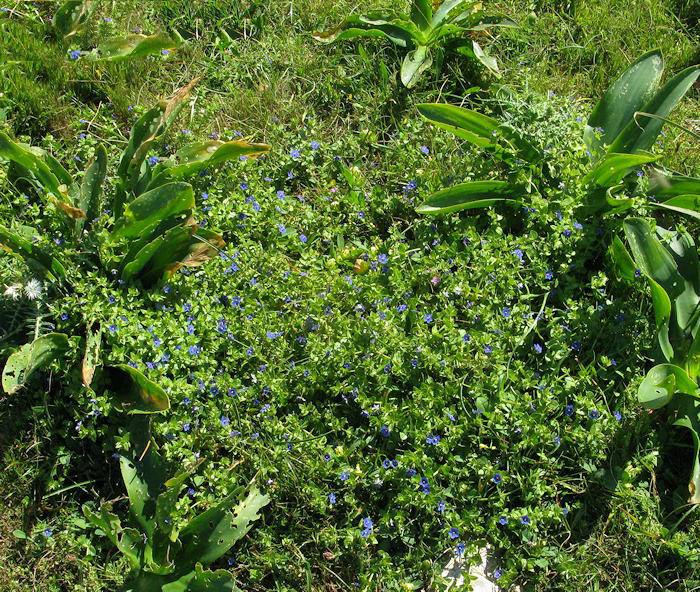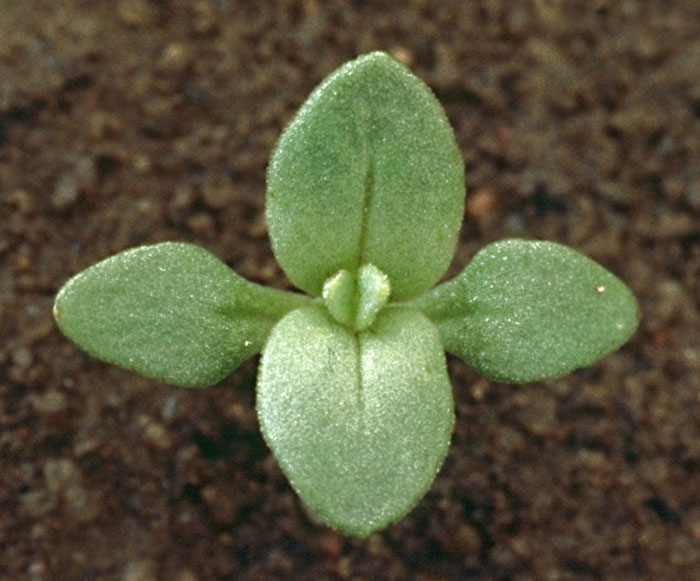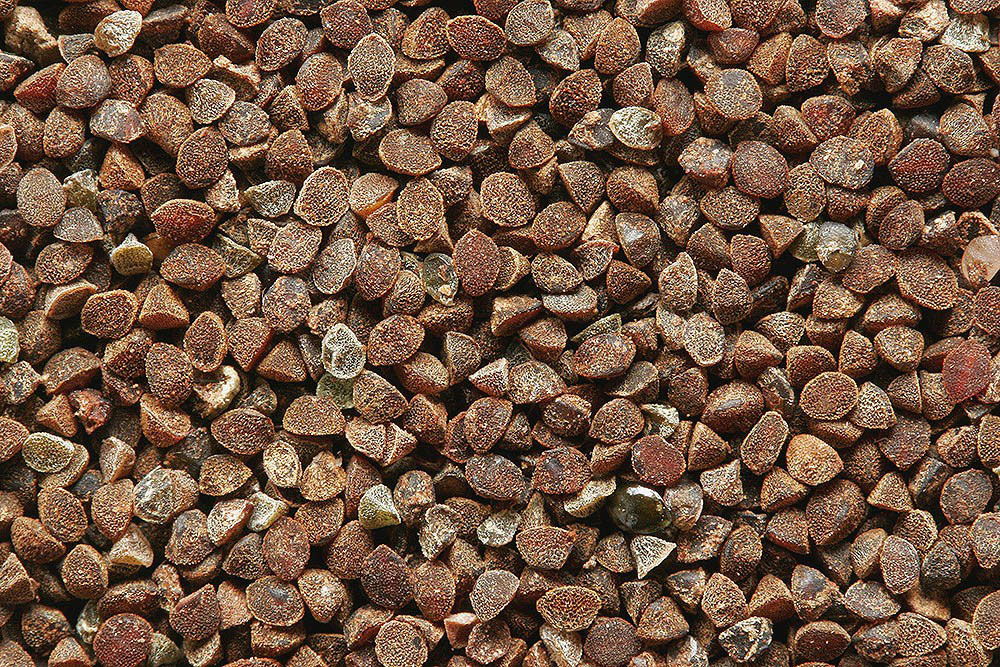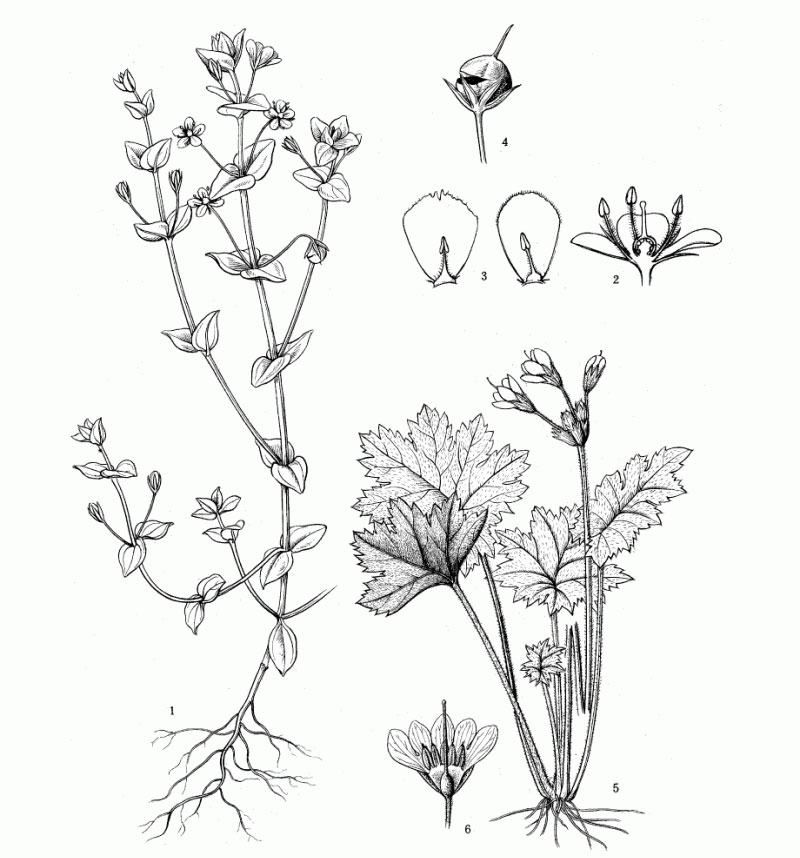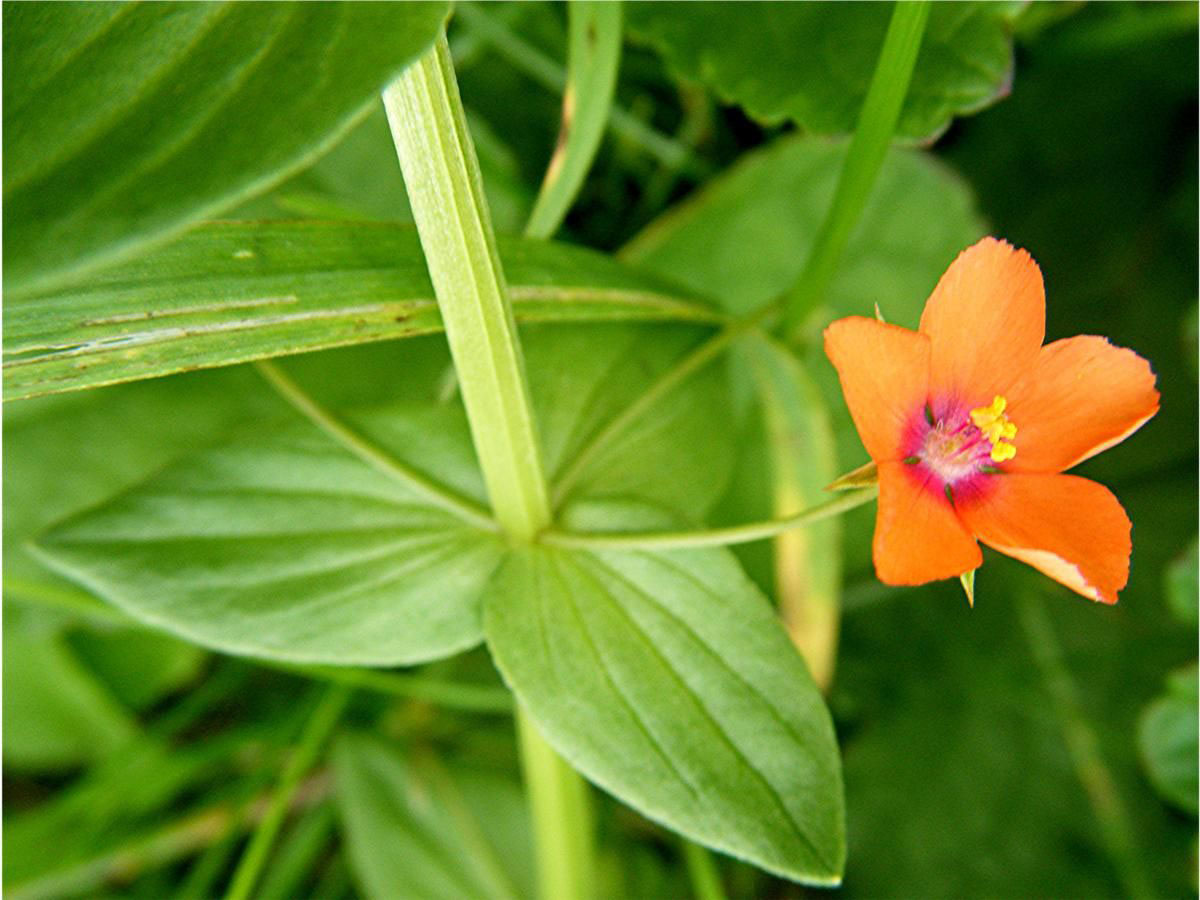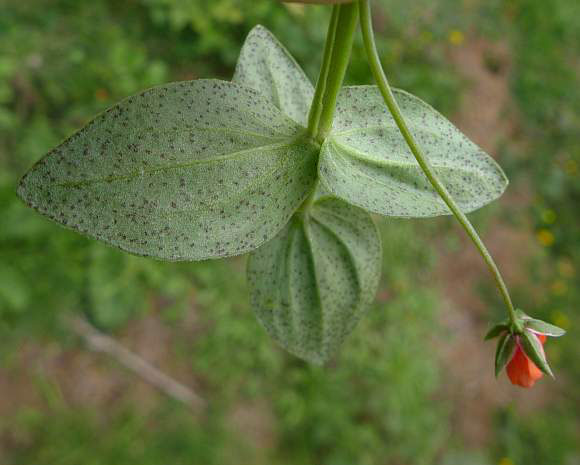| Scarlet Pimpernel Quick Facts | |
|---|---|
| Name: | Scarlet Pimpernel |
| Scientific Name: | Anagallis arvensis |
| Origin | Europe and Western Asia and North Africa |
| Colors | Green at first and ripening to brown |
| Shapes | Tiny, globular, dehiscent, apiculate papery capsule that is about 3 to 4 mm in diameter |
| Taste | Bitter, pungent |
| Health benefits | Good for pruritus, rheumatism, hemorrhoids, rabies, leprosy, chronic nephritis, gallstones, cirrhosis, lung problems, kidney stones, urinary tract infections, dropsy and gout |
| Name | Scarlet Pimpernel |
|---|---|
| Scientific Name | Anagallis arvensis |
| Native | Europe and Western Asia, North Africa now naturalized almost worldwide, with a range that includes the Americas, Central and East Asia, the Indian Subcontinent, Malesia, the Pacific Islands, Australasia and Southern Africa |
| Common Names | Poor man’s Weatherglass, scarlet pimpernel, red pimpernel, red chickweed, poorman’s barometer, shepherd’s weather glass, shepherd’s clock, bird’s-eye, blue pimpernel, common pimpernel, poison chickweed, poisonous pimpernel, poisonweed, wink-a-peep, blue-scarlet pimpernel |
| Name in Other Languages | Afrikaans: Blouselbommetjie Albanian: Barcapoj, rruthe e fushave Algeria: Lizireg, meridjana Arabic: l-ê wid lehmar, âïnel-fellous, ‘Ayn al qat, ‘Ebeila, ‘ayen el jamel, ebeila, ‘am laban (am libin) (ام لبن (أم لِبِن), sabun ghit (صابون غيط), eubaylah (عبيله), eayan aljaml (eayn aljaml) (عين الجَمل (عَين الجَمل), labayna, hashishih alealaq (لبين، حشيشه العلق), naba’at eayan alquti (نبات عين القط, Lizireg, Meridjana, Mocerane el djerane, Mocerane el djadj, Loubbene, Meghlis Armenian: Mknakanj dashtayin (Մկնականջ դաշտային) Azerbaijani: Tarla anaqallisi Basque: Pasmo-belar loregorri Bengali: Nīla bām̐dhaphula (নীল বাঁধফুল) Bokmal: Nonsblom Brazil: Escalarte Bulgarian: obiknoveno ognivche (обикновено огнивче), polsko ognivche (полско огнивче) Catalan: Anagall, moragues, morrò vermell, Alfàbrega borda, Anagallis caerulea, Borrissol, Gallinassa, Herba de caderneres, Marietes, Mataconills, Morró blau, Morró vermell Chile: Pimpinela azul Chinese: Liú li fán lǚ (琉璃繁缕) Croatian: Poljska krivičica, krika poljska Czech: Drchnička rolní, Drchni Danish: Rød arve Denmark: Rod arve Dutch: Gewone guichelheil, rood guichelheil, rood muur, Rood guichelheil en blauw guichelheil, Rood en Blauw guichelheil, Guichelheil Egypt: Ain el-gamal, omm lebben, qonfooda, saboon gheit English: Care-all, common pimpernel, poor man’s barometer, poor man’s weather glass, red chickweed, red pimpernel, scarlet pimpernel, shepherd’s clock, shepherd’s weather glass, Bird’s-eye, Blue pimpernel, Pimpernel, Shepherd’s-clock, Scarlet Yellow-Loosestrife, shepherd’s-weatherglass, Poorman’s Barometer Estonian: Põld-varsapõlv Finnish: Peltopunka, puna alpi, peltopuna-alpi French: Menuchon, miroir du temps, morgeline, morgeline d’été, mouron des champs, mouron male, mouron rouge, Buglosse des champs, Mouron des champs, Anagallis arvensis azurea, Georgian: Sap’onela (საპონელა) German: Ackeregauchheil, Ackergauchheil, roter Gauchheil, Feld Gauchheil, Nebelpflanze, Weinbergsstern, Wetterkraut Greek: Anagallída (αναγαλλίδα) Hawaii: Poisonous pimpernel Hebrew: Marganit hassadeh, מַרְגָּנִית הַשָּׂדֶה Hindi: Biliputi, krishnaneel (कृष्ण नील), Dharti Dhak, Neel (नील) Hungarian: Mezei tikszem Icelandic: Nónblóm Iran: Bazrak vahshee Iraq: Rmaimeeneh Irish: Falcaire fiáin Italian: Anagallide rossa, bellichina, centonchio dei campi, mordigallina Japanese: Akabanarurihakobe (アカバナルリハコベ), rurihakobe Kannada: Suryakanti Soppu Kazakh: Egistik közdäri (Егістік көздәрі) Latvian: Tīruma pavirza Lebanon: Adhan el far el nabti, lubbayn, zaghila Lithuanian: Raudonžiedis progailis Macedonia: Vidovcica crvena, огнивче Malayalam: Bellichina Maltese: Harira ħamra Marathi: Ran Draksh (रान द्राक्ष) Mauritius: Mouron Netherlands: Gewoon guichelheil, guichelheil Norwegian: Nonsblom, rodarve Occitan: Erbo di canàri, Morrelon, Morron Pakistan: Bili booti Persian: آناغالیس قرمز Polish: Kurzyślad polny Portuguese: Erva-do-garrotilho, morrião, morrião-de-folhas-largas, morrião-dos-campos, morrião-vermelho, morrão-vermelho, escarlate Pushto: اناگالیس اروېنسیس Romanian: Scînteiuţă Russian: Očnyj cvet polevoj, ochnyy tsvet pashennyy (очный цвет пашенный), ochnyy tsvet polevoy (очный цвет полевой), ochnyy tsvet yarko-krasnyy (очный цвет ярко-красный) Serbian: Vidova trava (видова трава), poljska krika (пољска крика), crvena vidovčica (црвена видовчица) Slovak: Drchnička roľná, drchnička roľná ohnivá Slovene: Navadna češnjica, njivna kurja cesnjica South Africa: Blouseblommetjie, rooimuur Spanish: Anagallo, anagálide, andagallo, hierba coral, hierba de las güebras , hierba del mal de riñon, hierba diviesera, hierba pajera, morrón, murajes, amurajes, pilpis, morrons, picapoll, pimpenela escarlata, sulfatillo, coralillo, jaboncillo, pimpinela rosada, albajaca silvestre, anagálide hembra, anagálide macho, andagallo, arbejanilla, azulete, azulinas, centaura, escarlata tenida por macho, hierba corral, hierba gitana, hierba jabonera, jaboncito de golondrina, jabonera, jabón de gitana, jabón de gitana, jabón de rana, mata del Señor, morron de flor roja, mujares, murage hembra, murage pequeño portugués, murages azules, murages de flor colorada, murages de flor escarlata, murages, muraje, murajes, murriaô grande, pimpinela escarlata, yerba coral, yerba de las güebras, yerba dibiesera, yerba pajera, zapaticos del Señor, Andagallo, Swedish: Rödarv, rödmire, roedarv Taiwan: Hwo-jin-gu Tamil: Aṉiccam (அனிச்சம்), Aṉiccai malar (அனிச்சை மலர்), Aṉiccai (அனிச்சை), hwo-jin-gu Turkish: Farekulağı, tarla farekulagi Ukrainian: kuryachi ochky polʹovi (курячі очки польові), Kuryachi oka polʹovi (Курячі ока польові) USA: Poison chickweed, poisonweed, shepherd’s clock, wink-a-peep Yugoslavia: Vidovcia Uzbek: Sovunoʻt Welsh: Gwlyddyn Mair |
| Plant Growth Habit | Small much branched, low-growing prostrate annual hairless plant |
| Growing Climates | Crop fields, vineyards, orchards, pastures, grassland, turf, gardens, landscaped areas, urban sites, roadsides, margins of vernal pools, streams, marshes, coastal terraces, ocean beaches, other disturbed sites, waste ground, garden lawns, farmlands, fields, fallow land, seashores |
| Soil | Requires moist soil but does not tolerate waterlogging |
| Plant Size | 6 to 30 cm (2.4 to 12 inches) tall |
| Stem | Weak sprawling stems with square cross-section growing to about 5–30 centimeters (2–12 in) long. It is often prostrate, but non-radicant |
| Leaf | Leaves are opposite or occasionally whorled, and have conspicuous purple dots on their lower surface. The leaves are ovate to lanceolate in outline, sessile, and have entire margins |
| Flowering season | June to August |
| Flower | Flowers have five salmon-orange colored petals, slender stalks, and grow singly between the stem and leaf stalks. On rare occasion flowers can be brick red, bright blue or white |
| Fruit Shape & Size | Tiny, globular, dehiscent, apiculate papery capsule that is about 3 to 4 mm in diameter having a circular opening. Capsules are opposite and quite prolific along the stems |
| Fruit Color | Green at first and ripening to brown |
| Propagation | By seed |
| Flavor/Aroma | Odorless |
| Seed | Angular shaped 1 mm long seeds with reticulated surface, dark brown to black in color |
| Taste | Bitter, pungent |
| Available Forms | Fresh, liquid extracts or tincture |
| Season | July to September |
Plant Description
Scarlet Pimpernel is a small much branched, low-growing prostrate annual hairless plant that normally grows about 6 to 30 cm (2.4 to 12 inches) tall. The plant is found growing in crop fields, vineyards, orchards, pastures, grassland, turf, gardens, landscaped areas, urban sites, roadsides, margins of vernal pools, streams, marshes, coastal terraces, ocean beaches, other disturbed sites, waste ground, garden lawns, farmlands, fields, fallow land and seashores. The plant requires moist soil but does not tolerate waterlogging. Stem is green, fleshy, weak sprawling with square cross-section growing to about 5–30 centimeters (2–12 in) long. It is often prostrate, but non-radicant.
Leaves
Leaves occur in opposite pairs or rarely in whorls of three. They are ovate to lanceolate in outline, stalk less, 5 to 20 mm long and 4 to 12 mm wide, with rounded bases, smooth margins and bluntly pointed tips. They are smooth and hairless, densely dotted beneath with small dark glands, and usually dark-green. The lamina has an entire margin, is glandular, smooth and glabrous on the 2 sides.
Flowers
The flowers are solitary, and are located on the upper leaf axils. The pedicel is longer than the leaves that underpin it. It bends after fertilization. Calyx consists of five oval lobes that are 4 mm long, pointed at the end, with a keeled back, fused at their base. The corolla has 5 petals (5 mm long) broadly obovate, with rounded or blunt tip, fused at their base, pubescent at the base of their inner face. They are red, orange or blue or mixed colors, purple on the internal surface of the collar or none. Numerous small glands are inserted on their margin, in its upper part (glands consisting of 3 cells, globular terminal). The 5 stamens (3 mm long), with hairy-filaments, are free. They are inserted on the basis of the corolla. The sub spherical ovary carries an elongated style ending in a globular stigma. The placenta is fully covered by the ovules. The flowers are only open for few hours during the day, and only if there is sun. They remain closed during cool or cloudy weather. Flowering normally takes place from June to August.
Fruits
Fertile flowers are followed by tiny, globular, dehiscent, apiculate papery capsule that is about 3 to 4 mm in diameter having a circular opening. They are initially green ripening to brown before the top breaks away to release the numerous seeds. It consists of a single loculus which encloses numerous seeds. Capsules are opposite and quite prolific along the stems.
Seeds
Seed is angular to sub-globular, more or less angular. It measures 0.8 to 1.2 mm in diameter, 0.9 to 1.4 mm long and 0.8 to 1 mm wide. Its surface is cross linked and is dark brown to black colored. There are 35-40 seeds per seed capsule. The average seed number per plant is 900 but a large plant may yield 12,000 seeds.
Traditional uses and benefits of Scarlet Pimpernel
- The scarlet pimpernel was at one time extremely regarded as a medicinal herb, particularly in the treatment of epilepsy and mental problems, but there is little evidence to support its efficacy and it is no longer suggested for internal use because it contains toxic saponin and cytotoxic cucurbitacins.
- The whole herb is antitussive, cholagogue, diaphoretic, diuretic, expectorant, nervine, purgative, stimulant and vulnerary.
- It can be taken internally or applied externally as a poultice.
- An infusion is used in the treatment of dropsy, skin infections and disorders of the liver and gall bladder.
- A homeopathic remedy is made from the plant.
- It is used internally to treat itchy skins and externally to remove warts.
- It has been applied as an expectorant and as a remedy for pruritus, rheumatism, hemorrhoids, rabies, leprosy, and snake-bite.
- It has been used in treatment of non-specified types of phthisis, and of kidney-related conditions such as dropsy and chronic nephritis.
- It was used as an antidepressant in ancient Greece, and to treat various mental disorders in European folk medicine.
- It was used to treat epilepsy, rabies, tuberculosis, and depression.
- In European folk medicine, it was once used as a medicinal herb for treating gallstones, cirrhosis, lung problems, kidney stones, urinary tract infections, dropsy, gout, and rheumatic conditions.
- The herb may be helpful in lowering high fever and expel phlegm and mucus in the chest and throat.
- It may be useful as an herbal remedy for the common cold or flu.
- Externally, it has sometimes has been used to treat minor wounds, cuts, and scrapes due to its astringent effect.
- It has also been used to relieve gout and joint pain.
- Juice from the plant can be rubbed on wasp and bee stings to relieve the pain and also to remove warts.
- In China it is a folklore remedy for snake bite and hydrophobia.
Culinary Uses
- Leaves can be consumed raw or cooked.
- It can be used in salads and as spinach.
- The tender shoots are cooked as a vegetable.
- It is best not to eat these leaves.
Other Facts
- The squeezed plant is used in Nepal for washing and bathing.
- Anagallis arvensis is insecticidal, or at least is repellent to some insects.
- The flower serves as the symbol of the fictional hero the Scarlet Pimpernel.
- The flowers open at about 8 am and close at 3pm each day, though they close earlier if it rains.
Dosage and Administration
If scarlet pimpernel is planned for use as medicine, it must be done with great caution and only in very small doses. This herb is not appropriate for self-medication and should only be used under the instructions and care of qualified health care professional knowledgeable in herbal medicine.
Some herbal literature recommends it as a tea with the dosage of 0.25-0.5 g of the dried, finely cut herb in a cup of boiling water, consumed in small sips throughout the day.
Precautions
- The seeds are slightly poisonous to some mammals, but no cases involving people are known.
- Skin contact with the plant can cause dermatitis in some people.
- Taken by mouth, experimental doses of the liquid in humans caused twenty-four hours of intense nausea, headache and bodily pain.
- Some people also experience dermatitis from contact with the leaf.
- In small doses, it can cause vomiting and abdominal pain followed by diarrhea.
- In high doses, it can cause polyuria (excessive urination volume), tremors, convulsions and paralysis of the respiratory system which can even lead to death.
- Although the herb was once used as food and in cooking and given the toxicity of the herb, it is highly advisable not to include it in any kind of cooking or as an ingredient in salads.
- The plant contains saponin that is known to cause an external allergic reaction such skin irritations and rash in some people.
References:
https://gd.eppo.int/taxon/ANGAR
http://www.theplantlist.org/tpl1.1/record/kew-2636008
https://www.itis.gov/servlet/SingleRpt/SingleRpt?search_topic=TSN&search_value=24043#null
http://www.hear.org/pier/species/anagallis_arvensis.htm
https://pfaf.org/user/Plant.aspx?LatinName=anagallis+arvensis
https://www.cabi.org/isc/datasheet/5352
http://www.floracatalana.net/anagallis-arvensis-l-
https://plants.usda.gov/core/profile?symbol=ANAR
https://en.wikipedia.org/wiki/Anagallis_arvensis
https://npgsweb.ars-grin.gov/gringlobal/taxonomydetail.aspx?316552
http://floraofalabama.org/Plant.aspx?id=5345
https://botanical.com/botanical/mgmh/p/pimper33.html
https://indiabiodiversity.org/species/show/265546


